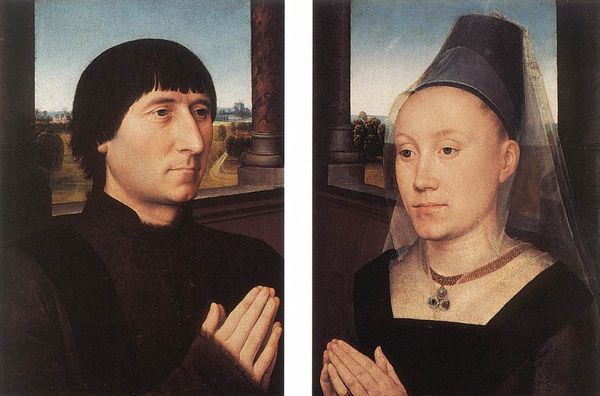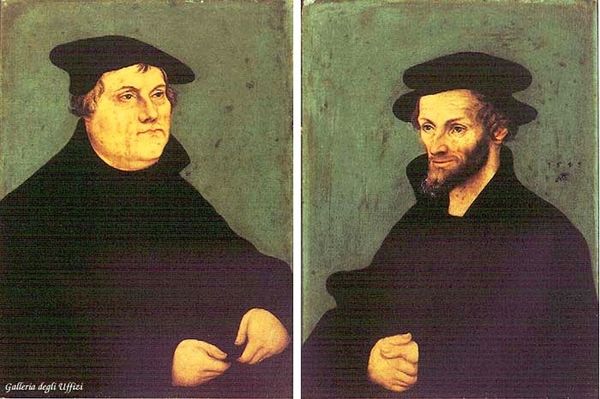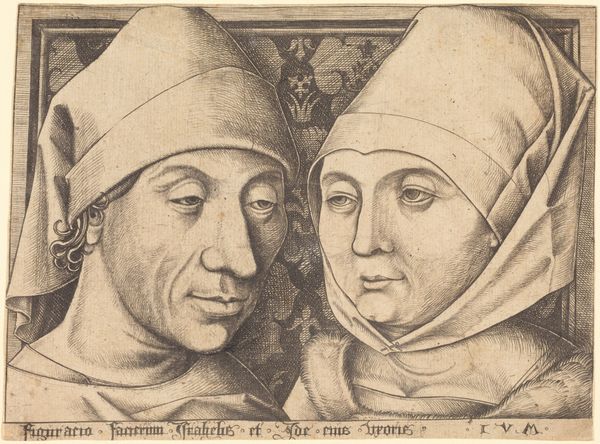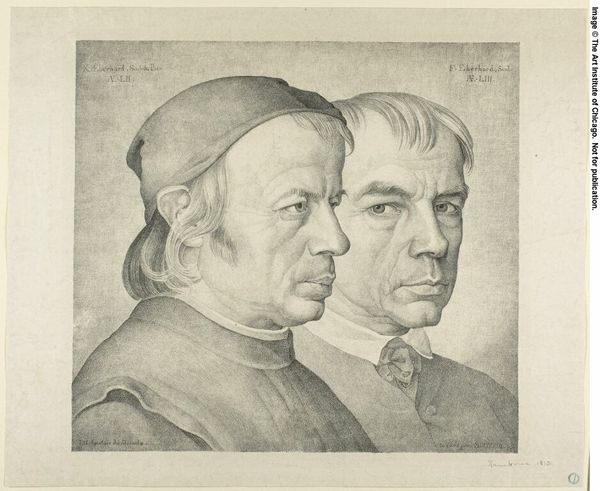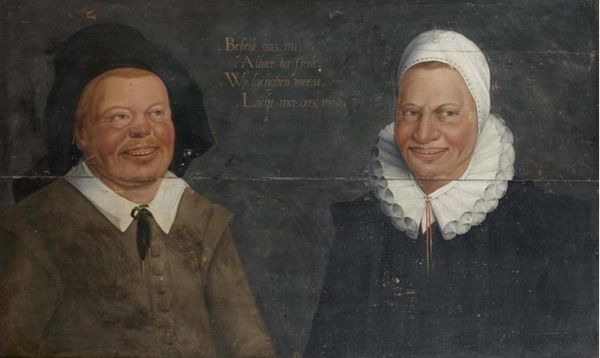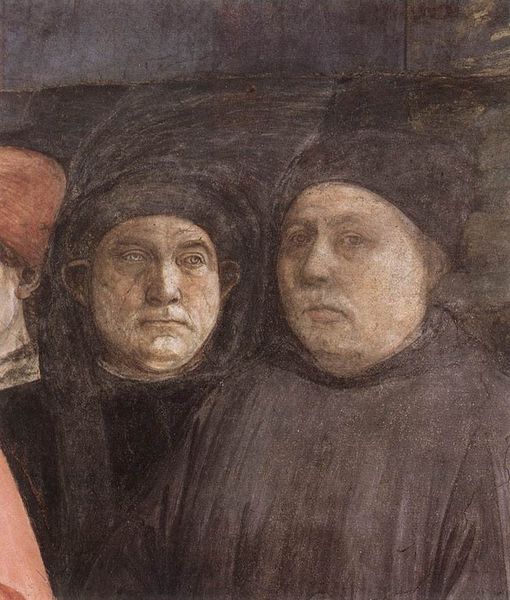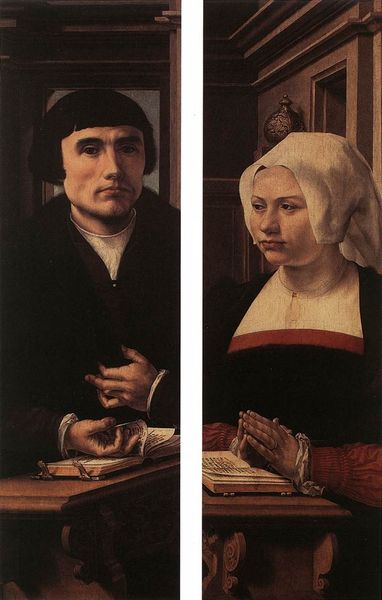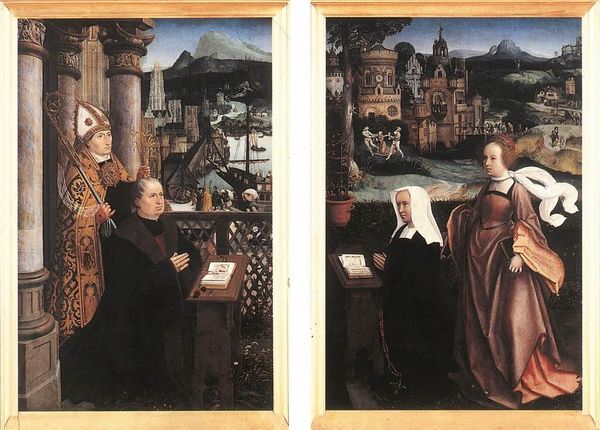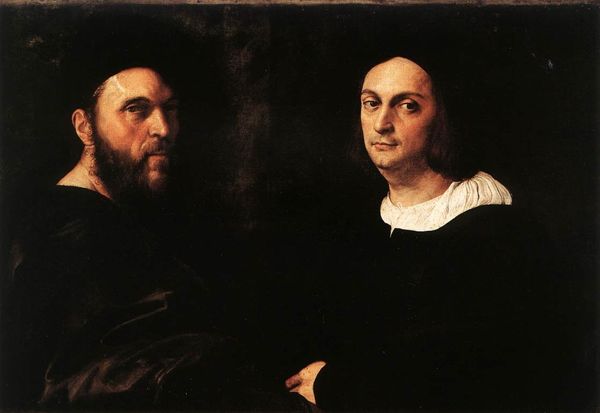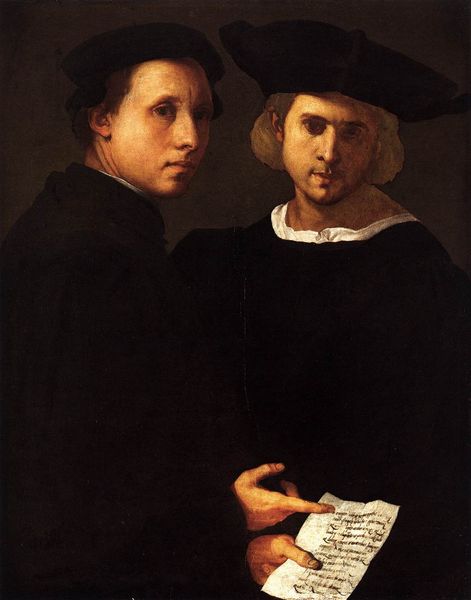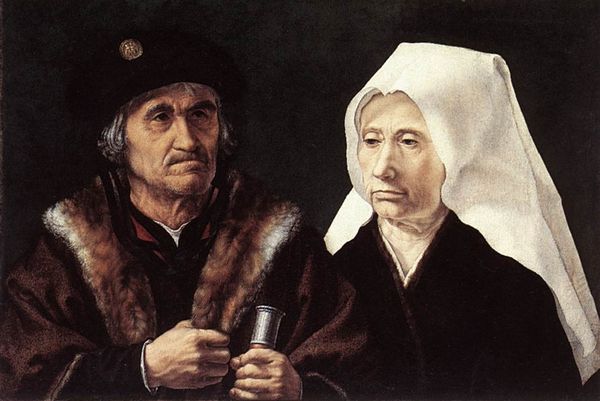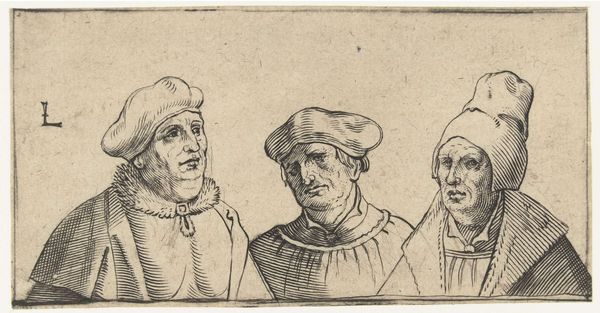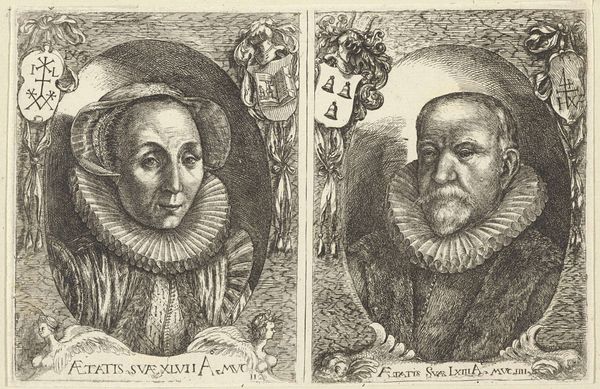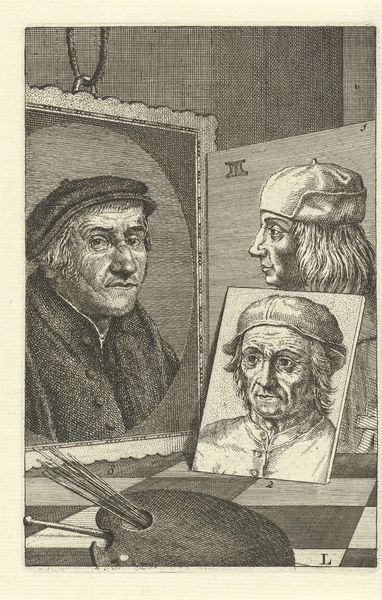
Diptych with the Portraits of Martin Luther and his Wife 1529
0:00
0:00
painting, oil-paint
#
portrait
#
painting
#
oil-paint
#
famous-people
#
history-painting
#
northern-renaissance
#
portrait art
Dimensions: 38 x 24 cm
Copyright: Public domain
Curator: Here we have a diptych created by Lucas Cranach the Elder in 1529. It features portraits of Martin Luther and his wife, Katharina von Bora. Editor: The portraits have an incredible stillness to them, a reserved quality that makes them both dignified and a little bit haunting. And the blue background almost looks like enamelware. Curator: Precisely! This piece holds immense historical importance, reflecting the changing social roles and perceptions of religious figures during the Reformation. The pairing of Martin Luther and his wife in portraiture signifies a shift towards acknowledging the importance of domestic life even within the clergy. Editor: Looking closely, it seems so deliberate—every layer, every color. You see it in the details of their clothing, but also in how these paintings, especially on wood, circulated widely as tools of propaganda, right? These weren't just pretty pictures but actively made and marketed in response to growing market demand. Curator: Absolutely. Cranach, a key figure himself in propagating Luther’s cause, utilized his art as a crucial communication method. The availability of painted portraits such as this served as a political endorsement and a testament to Luther's widespread support among nobles and common people alike. Editor: I also can't help but notice the way Katharina is depicted; even her fur trim feels tactile, somehow communicating status and material comfort, indicating a very specific social reality, how these domestic settings get constructed via materials available and depicted within. Curator: True, their deliberate pairing showcases both personal dynamics within marriage and symbolizes social change spurred by reformed ideologies concerning priesthood and its redefined relationship within a household, disrupting earlier notions about piety's necessary separation from marriage life. Editor: I’m thinking how this could have played a powerful role in the lives of the emerging Protestant community. Not just representationally, as something to look *at*, but materially—the *thingness* of these diptychs offered the promise to reconfigure family life and work and worship… fascinating how he made art with an eye to the bottom line as well as to theology. Curator: Indeed. Cranach excelled at navigating the complex worlds of Reformation politics and emerging visual markets through pieces with dual-purpose designs. Ultimately, this work offers insight into Reformation identity construction. Editor: It makes you think of everything from labor involved to get this material here to the role that it ultimately ended up playing, as both art object and propaganda tool. Curator: Absolutely, a telling moment from Northern Renaissance portraiture!
Comments
No comments
Be the first to comment and join the conversation on the ultimate creative platform.
